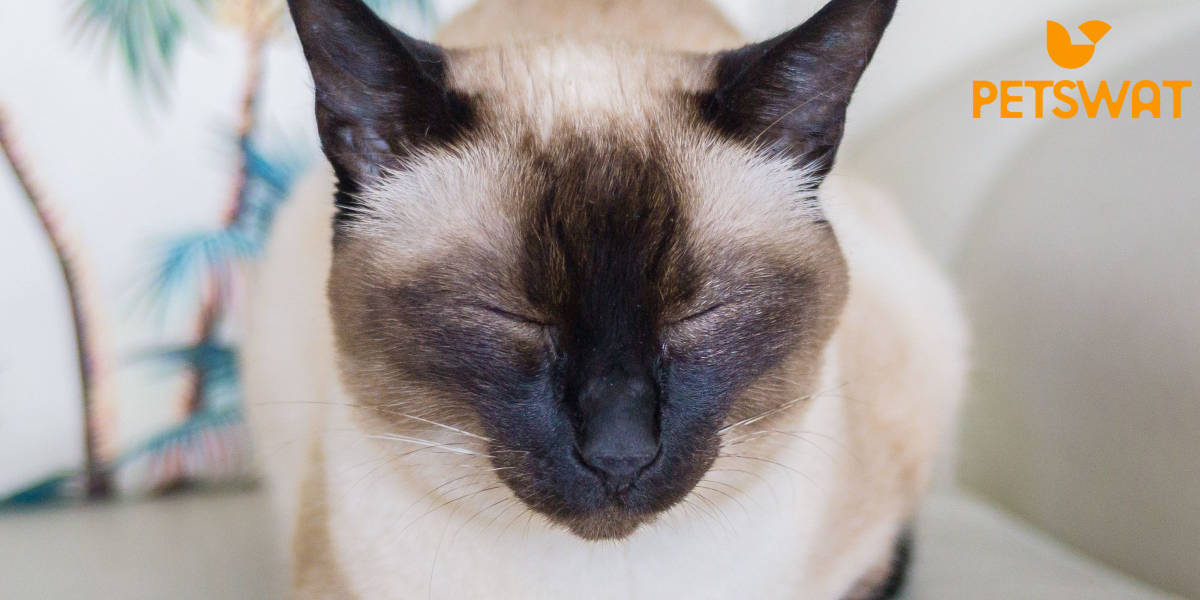Siamese cats are one of the most recognizable and beloved cat breeds in the world. With their striking blue almond-shaped eyes, sleek bodies, and distinctive color points, Siamese cats have captured the hearts of cat lovers for centuries. The breed has a rich history that dates back to ancient Siam (now Thailand), where they were revered as sacred cats. Today, Siamese cats are known for their intelligence, playfulness, and vocal nature and I bet that many people would love to know when do Siamese cats stop growing.
tl;dr: Siamese cats typically stop growing at around 1 to 1.5 years of age, reaching their full adult size and weight.
In terms of physical characteristics, Siamese cats have a medium-sized body with a long, slender neck and legs. They have a wedge-shaped head with large ears and a short, fine coat that comes in various color points, including seal, blue, chocolate, and lilac. Siamese cats are also known for their striking blue eyes, which are one of their most defining features.
In terms of behavior, Siamese cats are highly social and affectionate. They form strong bonds with their human companions and thrive on attention and interaction. Siamese cats are also known for their vocal nature and will often communicate with their owners through meows, chirps, and even loud yowls. They are intelligent and curious cats that enjoy exploring their surroundings and engaging in interactive play.
Kittenhood
The first few months of a Siamese cat’s life are crucial for their development and socialization. Siamese kittens are typically born with white fur and their color points start to develop within the first few weeks. During this time, it is important to provide them with a warm and safe environment where they can grow and thrive.
Socialization is key during this stage, as it helps kittens develop trust and bond with humans. Spending time with your Siamese kitten through gentle handling, playtime, and positive reinforcement will help them feel comfortable around people. It is also important to expose them to different sights, sounds, and experiences to help them become well-adjusted cats.
Developmental Milestones
Siamese cats go through several growth stages as they develop from kittens to adults. Understanding these milestones can help you provide the appropriate care and support for your Siamese cat at each stage.
During the first few weeks, Siamese kittens rely on their mother for nourishment and warmth. They start to open their eyes and ears around two weeks of age and begin to explore their surroundings. By four weeks, they are fully weaned and can start eating solid food.
Between three to six months, Siamese kittens go through a rapid growth phase. They become more active and playful, and their personalities start to emerge. This is also the stage where they develop their color points and their coat starts to change.
By six months, Siamese kittens are considered adolescents. They are still growing but have reached a significant portion of their adult size. Their behavior may become more independent and they may start testing boundaries.
Feeding Siamese Kittens
Proper nutrition is essential for the optimal growth and development of Siamese kittens. During the first few weeks, they rely on their mother’s milk for nourishment. If you are caring for orphaned kittens, it is important to consult with a veterinarian to ensure they receive the appropriate formula and feeding schedule.
Once Siamese kittens are weaned, they can transition to solid food. It is important to choose a high-quality kitten food that is specifically formulated for their nutritional needs. Look for a food that is rich in protein and contains essential nutrients such as omega-3 fatty acids, vitamins, and minerals.
Feeding schedules may vary depending on the age of the kitten. Generally, it is recommended to feed Siamese kittens three to four times a day until they are six months old. Portion sizes should be appropriate for their age and size, and it is important to monitor their weight to ensure they are growing at a healthy rate.
Socialization
Socialization is a crucial aspect of raising a Siamese kitten. Helping them adapt to their environment and feel comfortable around people and other animals will contribute to their overall well-being and happiness.
Start by providing a safe and stimulating environment for your Siamese kitten. This includes providing toys, scratching posts, and perches for them to explore and play with. Spend quality time with your kitten, engaging in interactive play and gentle handling. This will help them build trust and form a bond with you.
Introducing your Siamese kitten to other pets should be done gradually and under supervision. Allow them to interact in a controlled environment, such as a separate room or through a baby gate. Monitor their behavior and provide positive reinforcement when they display appropriate behavior.
Adolescent Siamese Cats
The teenage years can be a challenging time for Siamese cat owners. During this stage, Siamese cats may exhibit increased energy levels, curiosity, and independence. They may become more vocal and assertive in their behavior.
To manage their energy and curiosity, provide plenty of opportunities for play and exercise. Interactive toys, puzzle feeders, and scratching posts can help keep them mentally stimulated and physically active. It is also important to establish boundaries and provide consistent discipline when necessary.
Training Siamese Cats
Siamese cats are highly intelligent and trainable. They enjoy learning new tricks and tasks, especially if it involves interaction with their owners. Positive reinforcement training methods work best with Siamese cats, as they respond well to praise, treats, and play rewards.
Start with basic commands such as sit, stay, and come. Use treats or toys as rewards when they successfully perform the desired behavior. Be patient and consistent in your training sessions, keeping them short and engaging.
Adult Siamese Cats
As Siamese cats reach adulthood, their physical and behavioral characteristics become more pronounced. They have a lean and muscular body, with a short coat that requires minimal grooming. Their striking blue eyes remain one of their most defining features.
In terms of behavior, adult Siamese cats are known for their social nature and strong bonds with their human companions. They enjoy being part of the family and may follow their owners around the house. They are also vocal cats and will often communicate through meows and chirps.
Health and Wellness
Siamese cats are generally healthy cats, but they may be prone to certain health issues. Some common health problems in Siamese cats include dental issues, respiratory problems, and genetic conditions such as progressive retinal atrophy (PRA) and amyloidosis.
To maintain the health and well-being of your Siamese cat, it is important to provide regular veterinary care. This includes vaccinations, annual check-ups, and preventive care such as dental cleanings. It is also important to provide a balanced diet, regular exercise, and a safe environment for your Siamese cat.
Conclusion
Siamese cats are truly unique and special creatures. Their rich history, distinctive physical characteristics, and playful personalities make them a popular choice among cat lovers. From their kittenhood to adulthood, Siamese cats require love, care, and attention to thrive.
By understanding their growth stages, nutritional needs, and socialization requirements, you can provide the best possible care for your Siamese cat. Whether you are a first-time owner or a seasoned cat lover, owning a Siamese cat is a rewarding experience that will bring joy and companionship to your life.
Originally posted 2023-09-29 04:15:50.
Johny is a dedicated pet enthusiast, author, and the driving force behind the insightful content at PetSWAT. With a deep passion for animals and a wealth of knowledge acquired through years of experience, Johny brings a unique perspective to the world of pet care and companionship.



